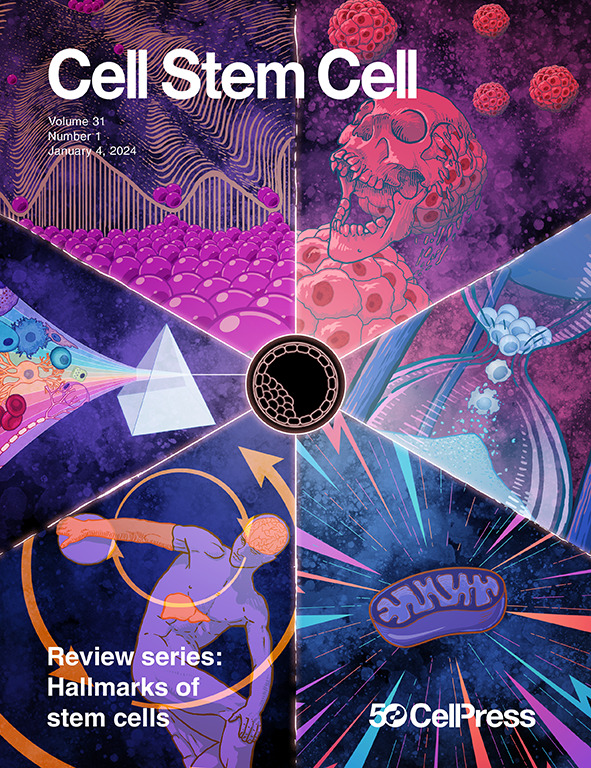tet2突变骨髓细胞通过中枢神经系统浸润和增强吞噬作用减轻小鼠阿尔茨海默病的进展
IF 20.4
1区 医学
Q1 CELL & TISSUE ENGINEERING
引用次数: 0
摘要
克隆造血(CH)与许多年龄相关疾病有关,但其与阿尔茨海默病(AD)的相互作用尚不清楚。本研究表明,在英国生物银行中,tet2突变的CH与晚发性AD (LOAD)风险降低47%相关,而其他CH驱动因素则不具有保护作用。在AD小鼠模型中,tet2突变骨髓移植减少了认知能力下降和β-淀粉样斑块的形成,而dnmt3a突变骨髓没有观察到这种作用。骨髓来源的小胶质样细胞在tet2突变的骨髓受体中检测到的比例增加,tet2突变的人诱导多能干细胞(iPSC)来源的小胶质细胞比dnmt3a突变或野生型小胶质细胞更具吞噬性和高炎症性。引人注目的是,单细胞RNA测序(scRNA-seq)显示,tet2突变骨髓移植小鼠的大脑中巨噬细胞和巡逻单核细胞增加,以响应趋化因子信号。这些研究揭示了CH对外周髓细胞浸润介导的AD发病机制具有tet2特异性保护作用。本文章由计算机程序翻译,如有差异,请以英文原文为准。

TET2-mutant myeloid cells mitigate Alzheimer’s disease progression via CNS infiltration and enhanced phagocytosis in mice
Clonal hematopoiesis (CH) is associated with many age-related diseases, but its interaction with Alzheimer’s disease (AD) remains unclear. Here, we show that TET2-mutant CH is associated with a 47% reduced risk of late-onset AD (LOAD) in the UK Biobank, whereas other drivers of CH do not confer protection. In a mouse model of AD, transplantation of Tet2-mutant bone marrow reduced cognitive decline and β-amyloid plaque formation, effects not observed with Dnmt3a-mutant marrow. Bone-marrow-derived microglia-like cells were detected at an increased rate in Tet2-mutant marrow recipients, and TET2-mutant human induced pluripotent stem cell (iPSC)-derived microglia were more phagocytic and hyperinflammatory than DNMT3A-mutant or wild-type microglia. Strikingly, single-cell RNA sequencing (scRNA-seq) revealed that macrophages and patrolling monocytes were increased in brains of mice transplanted with Tet2-mutant marrow in response to chemokine signaling. These studies reveal a TET2-specific protective effect of CH on AD pathogenesis mediated by peripheral myeloid cell infiltration.
求助全文
通过发布文献求助,成功后即可免费获取论文全文。
去求助
来源期刊

Cell stem cell
生物-细胞生物学
CiteScore
37.10
自引率
2.50%
发文量
151
审稿时长
42 days
期刊介绍:
Cell Stem Cell is a comprehensive journal covering the entire spectrum of stem cell biology. It encompasses various topics, including embryonic stem cells, pluripotency, germline stem cells, tissue-specific stem cells, differentiation, epigenetics, genomics, cancer stem cells, stem cell niches, disease models, nuclear transfer technology, bioengineering, drug discovery, in vivo imaging, therapeutic applications, regenerative medicine, clinical insights, research policies, ethical considerations, and technical innovations. The journal welcomes studies from any model system providing insights into stem cell biology, with a focus on human stem cells. It publishes research reports of significant importance, along with review and analysis articles covering diverse aspects of stem cell research.
 求助内容:
求助内容: 应助结果提醒方式:
应助结果提醒方式:


